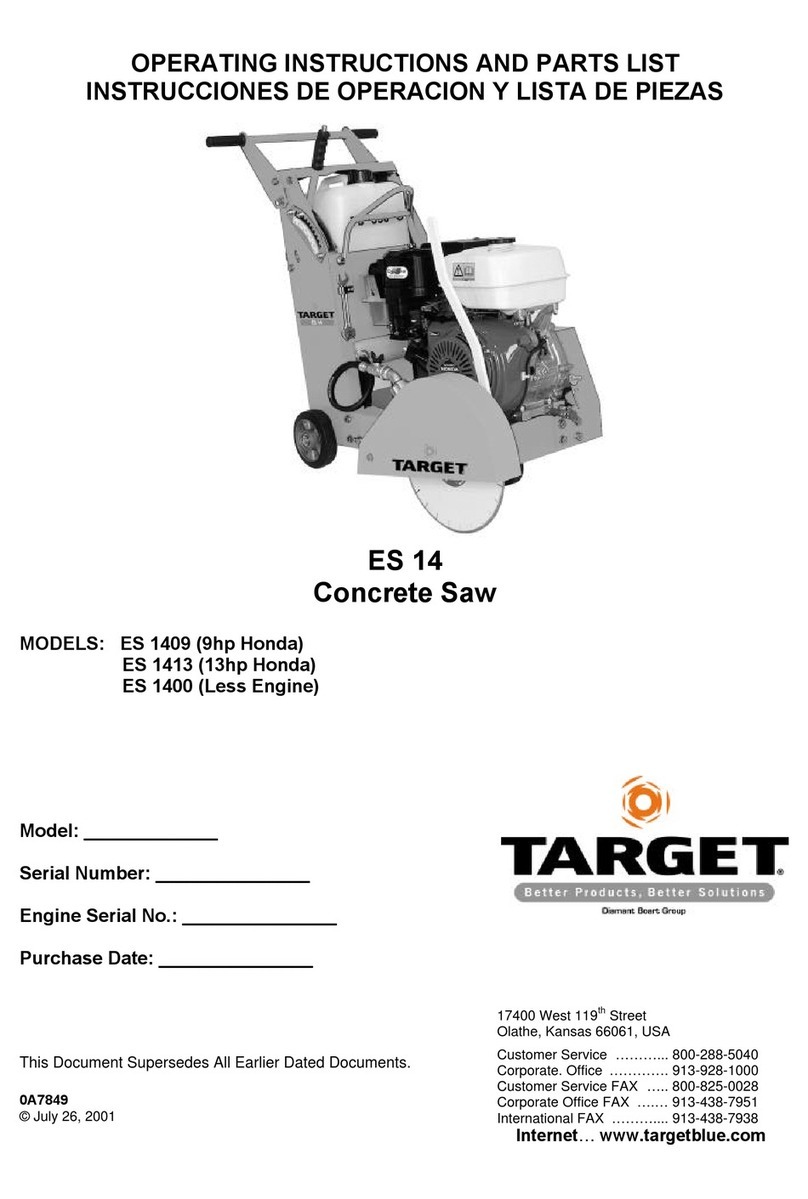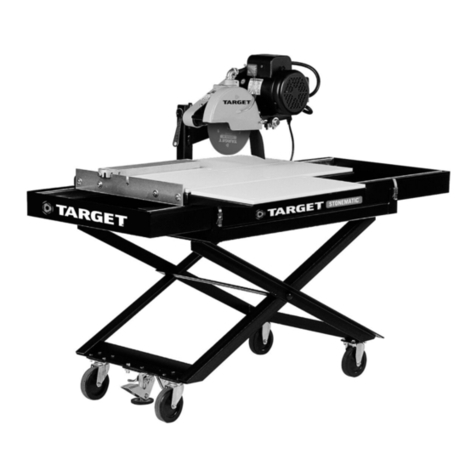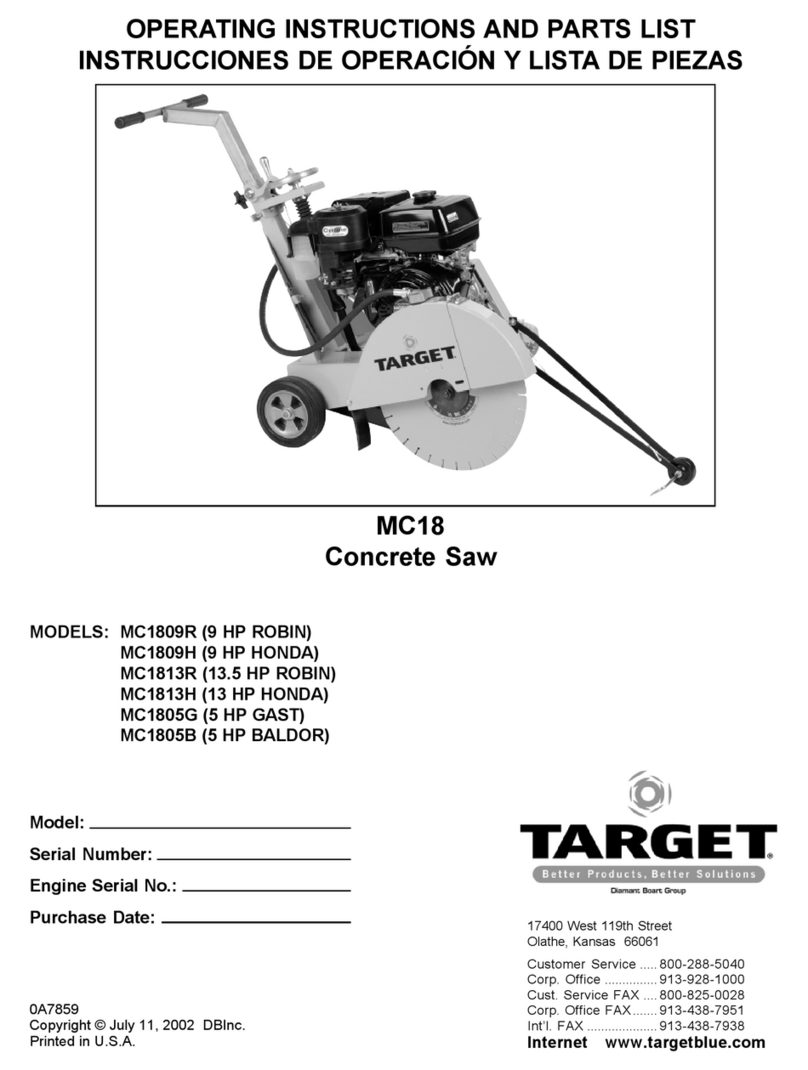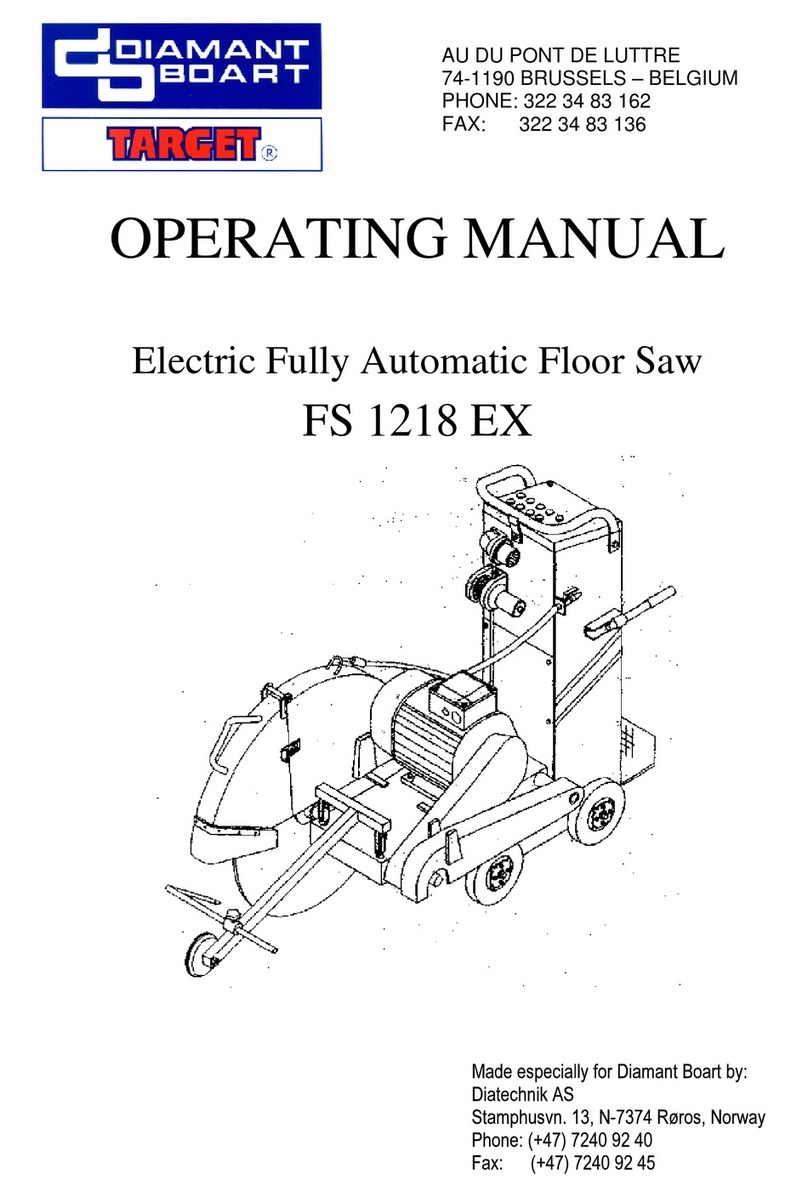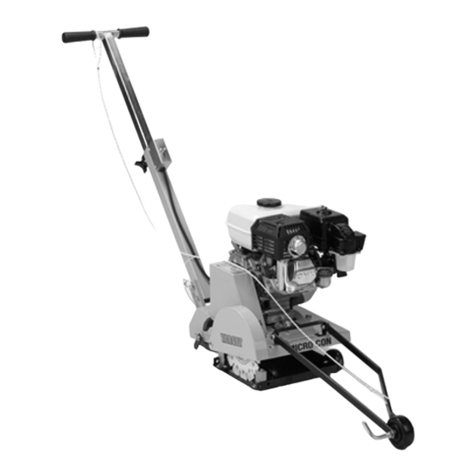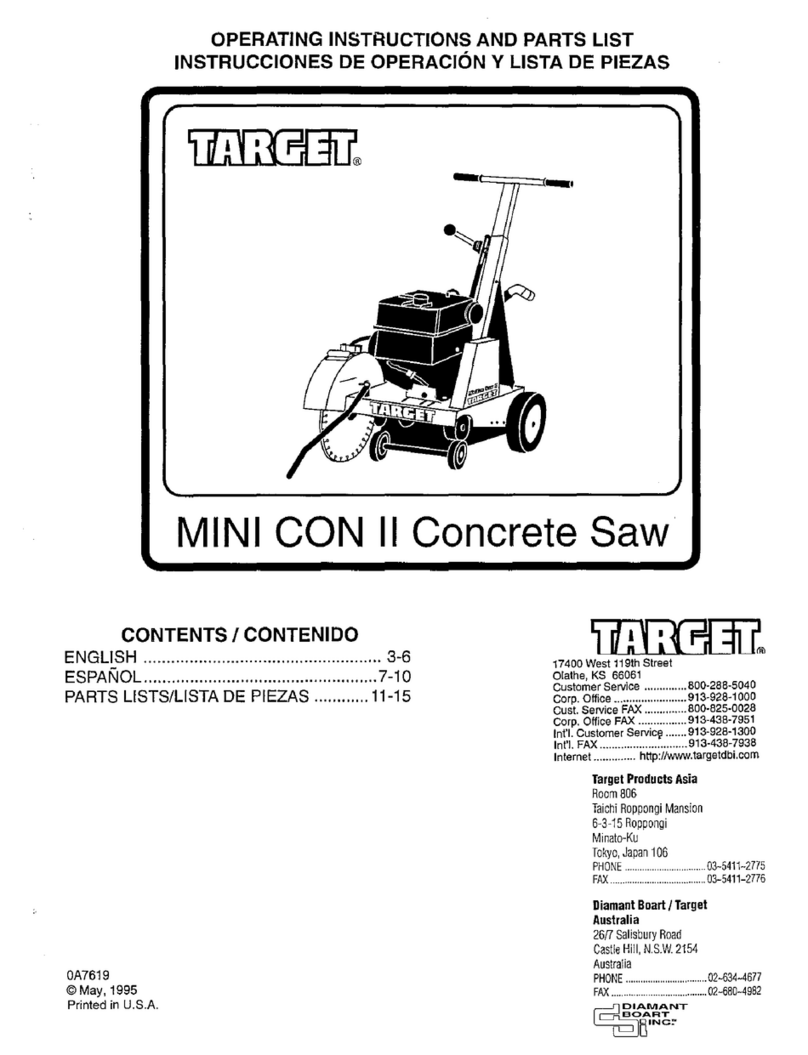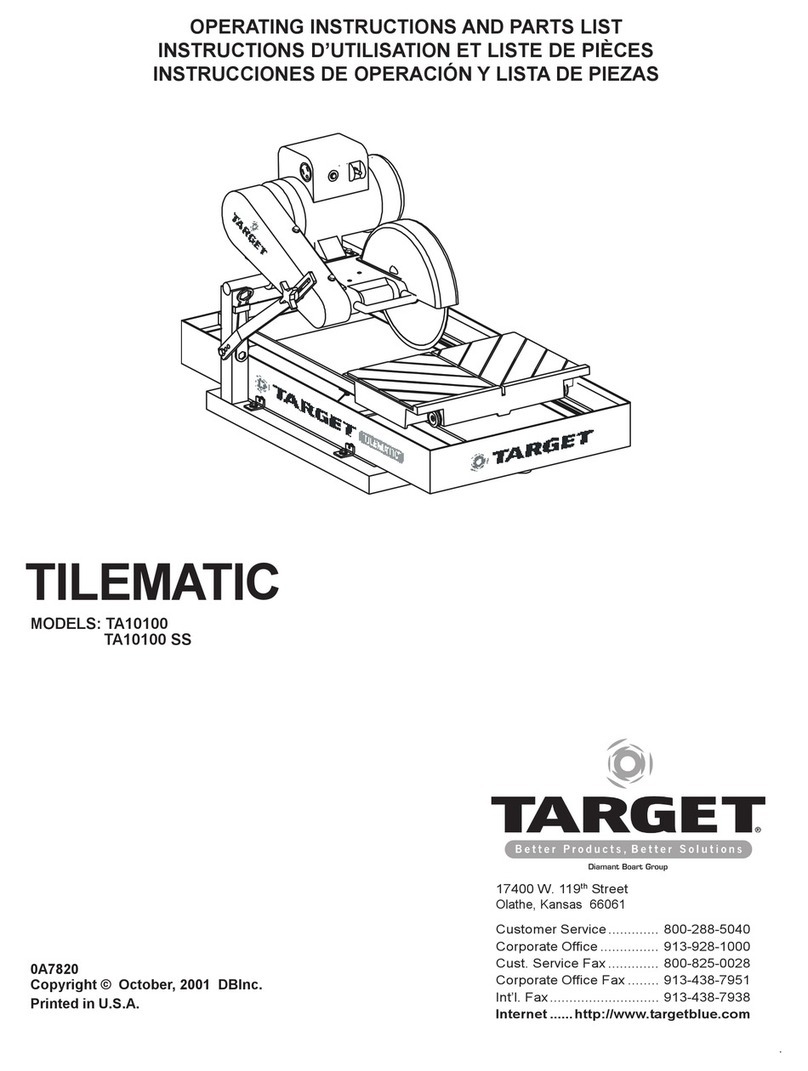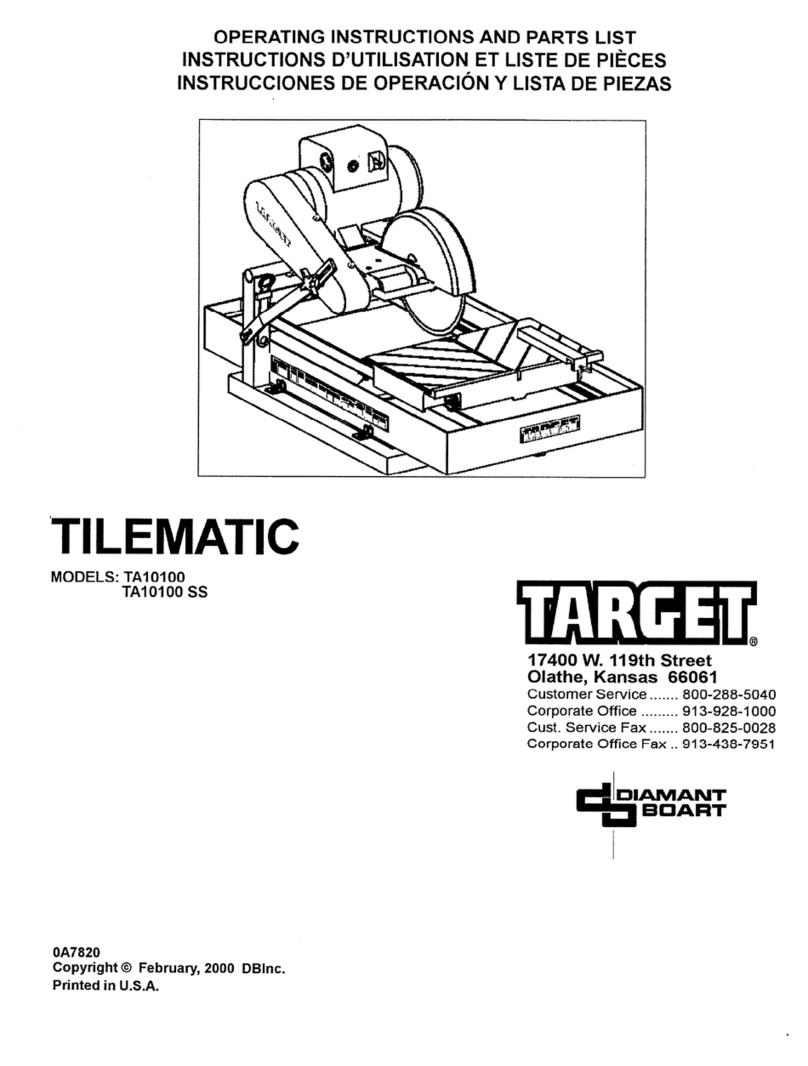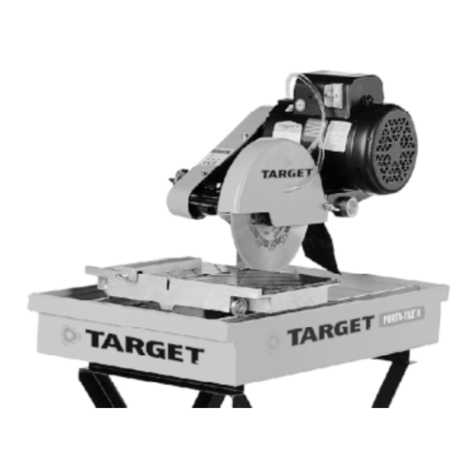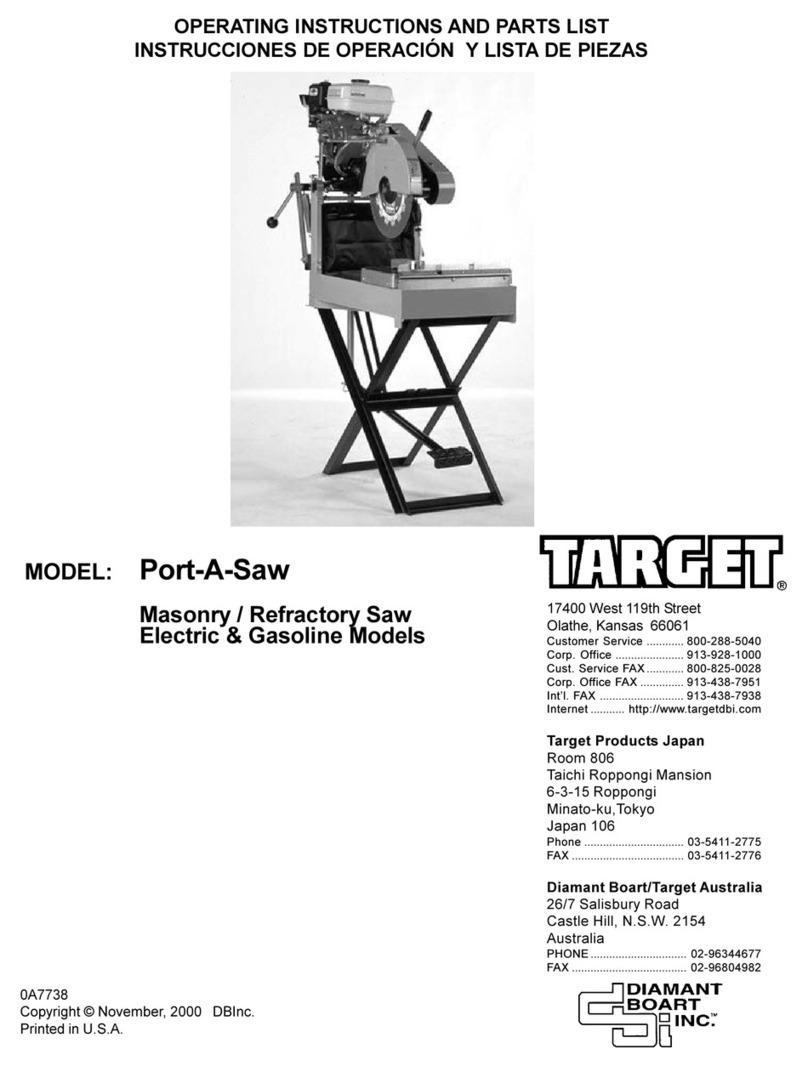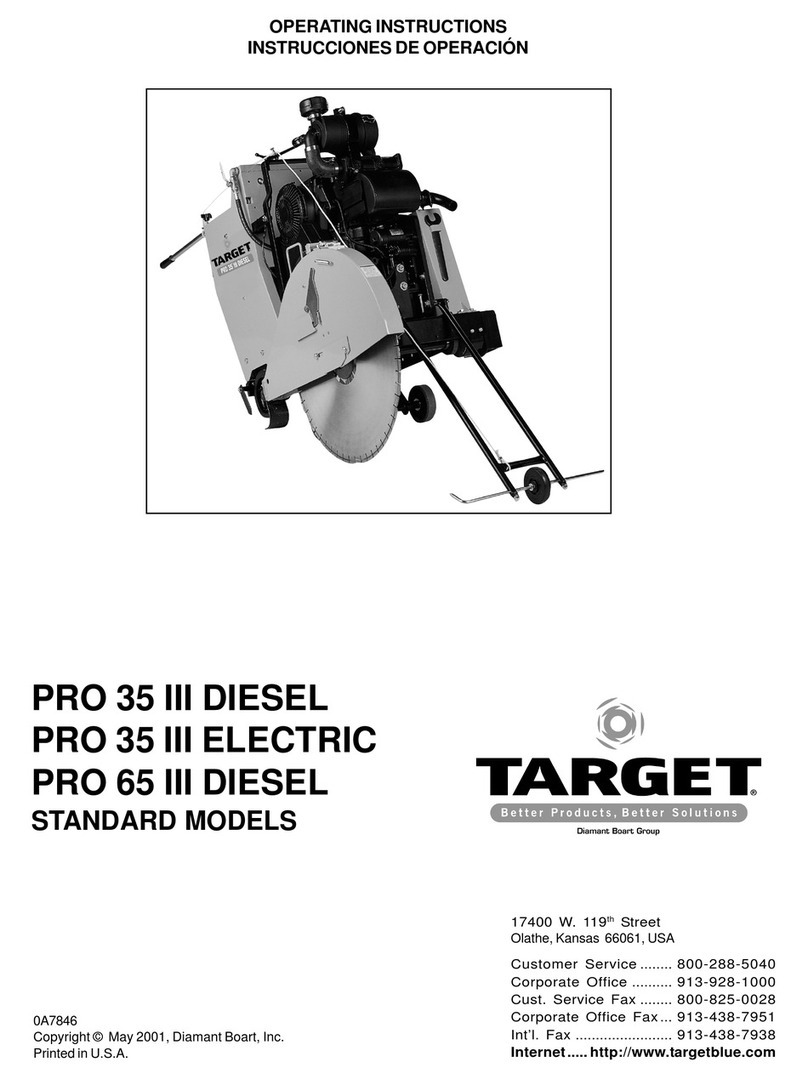
2
EVERY MACHINE IS THOROUGHLY TESTED BEFORE LEAVING THE FACTORY. EACH MACHINE IS SUP-
PLIED WITH A COPY OF THIS MANUAL. OPERATORS OF THIS EQUIPMENT MUST READ AND BE FAMIL-
IAR WITH THE SAFETY WARNINGS. FAILURE TO OBEY WARNINGS MAY RESULT IN INJURY OR DEATH.
FOLLOW INSTRUCTIONS STRICTLY TO ENSURE LONG SERVICE IN NORMAL OPERATION.
CONTENTS
Symbol Definitions ............................................................................................................................................ 3 - 6
Hearing Hazard Warnings ................................................................................................................................ 6
Decal Descriptions and Locations .................................................................................................................... 7
Specifications & Power Sources ....................................................................................................................... 8
Saw Dimensions ............................................................................................................................................... 9
Safety Warnings - Do's and Do Not's ............................................................................................................... 10 - 11
Reference Figures: 1 - 12 ................................................................................................................................. 12 - 14
Pre Operation Checklist .................................................................................................................................... 15
Instructions:
1 - Features .................................................................................................................................... 16
2 - Assembly .................................................................................................................................. 16 - 17
3 - Check Before Operating ........................................................................................................... 17 - 18
4 - Fitting the Blade ........................................................................................................................ 18
5 - Operating Instructions ............................................................................................................... 18 - 19
6 - Incidents During Operation ....................................................................................................... 20
7 - Maintenance ............................................................................................................................. 20 - 21
8 - V-Belt Tension ........................................................................................................................... 21
9 - Important Advice ....................................................................................................................... 21 - 22
10 - Accessories............................................................................................................................... 22
11 - Repairs ...................................................................................................................................... 22
12 - Spare Parts ............................................................................................................................... 22
Diagrams and Spare Parts ................................................................................................................................ 40 - 47
Wiring Diagrams ................................................................................................................ ............................... 48 - 49
ANTES DE COMENZAR: Lea y comprenda todas las advertencias e instrucciones antes de operar la máquina
que se describe en este manual. ¡LAS ADVERTENCIAS Y PRECAUCIONES DE ESTE MANUAL DEBEN SER
COMPRENDIDAS Y CUMPLIDAS! SI NO SE OBEDECEN LAS ADVERTENCIAS, SE PUEDEN PRODUCIR
SERIAS LESIONES O LA MUERTE. ES SU RESPONSABILIDAD el asegurarse que las personas que usen
esta máquina hayan leído este manual.
CONTENIDO
Definición de Símbolos ..................................................................................................................................... 3 - 6
Advertencias Auditivas de Peligro .................................................................................................................... 6
Calcomanís - Descripciones y Ubicaciones ..................................................................................................... 7
Especificiones y Fuentes de Energía ............................................................................................................... 24
Dimensiones de la Sierra.................................................................................................................................. 25
Advertencias de Seguridad - Los SI y Los NO ................................................................................................. 26 - 27
Ilustraciones de Referencia: 1 - 12 .................................................................................................................. 28 - 30
Pre-Operation Checklist .................................................................................................................................... 31
Instrucciones:
1 - Usos .......................................................................................................................................... 32
2 - Armado ..................................................................................................................................... 32 - 33
3 - Verifique Antes De Operar ........................................................................................................ 34
4 - Colocación De La Hoja ............................................................................................................. 34 - 35
5 - Instrucciones De Operación ..................................................................................................... 35 - 36
6 - IIncidentes Durante La Operación ............................................................................................ 36 - 37
7 - Mantenimiento .......................................................................................................................... 37 - 38
8 - Tensión De La Cinta En V ......................................................................................................... 38
9 - Consejo Importante................................................................................................................... 38 - 39
10 - Accesorios ................................................................................................................................ 39
11 - Reparaciones ............................................................................................................................ 39
12 - Piezas De Repuesto ................................................................................................................. 39
Diagramas y Lista de Piezas ............................................................................................................................ 40 - 47
Diagramas de Cableado ................................................................................................................................... 48 - 49
